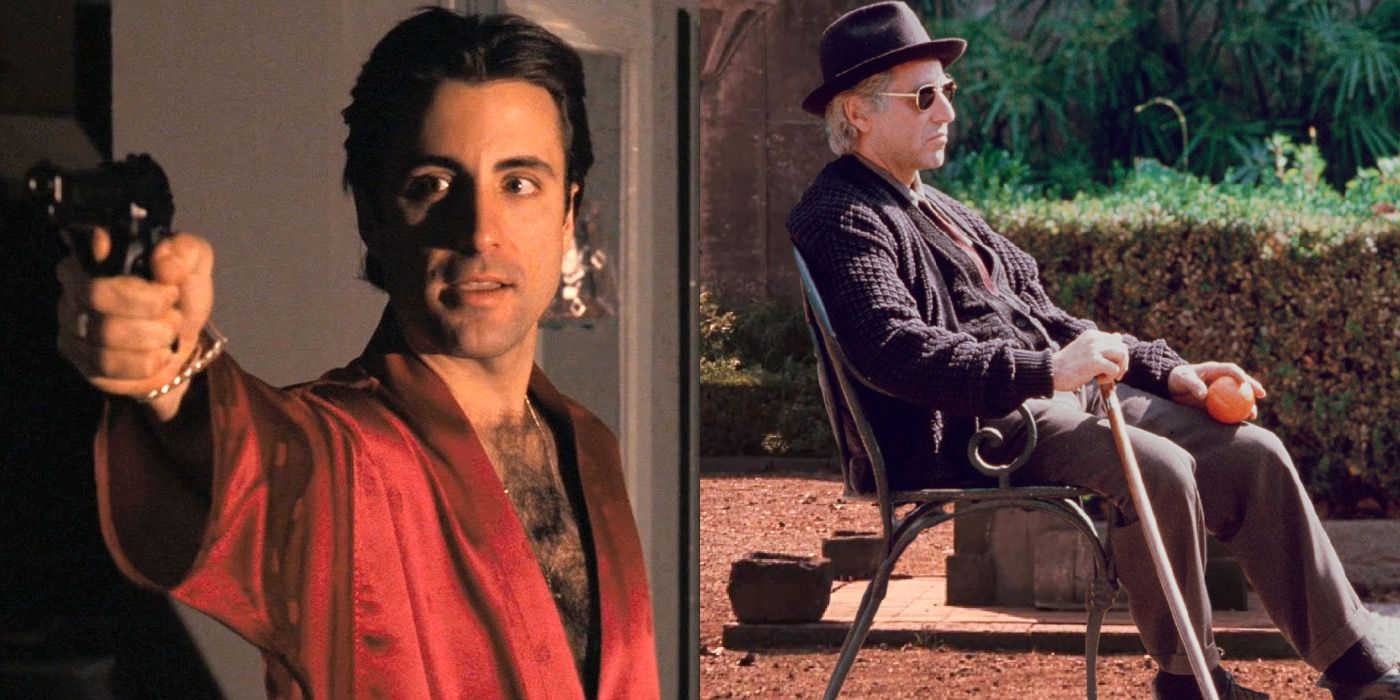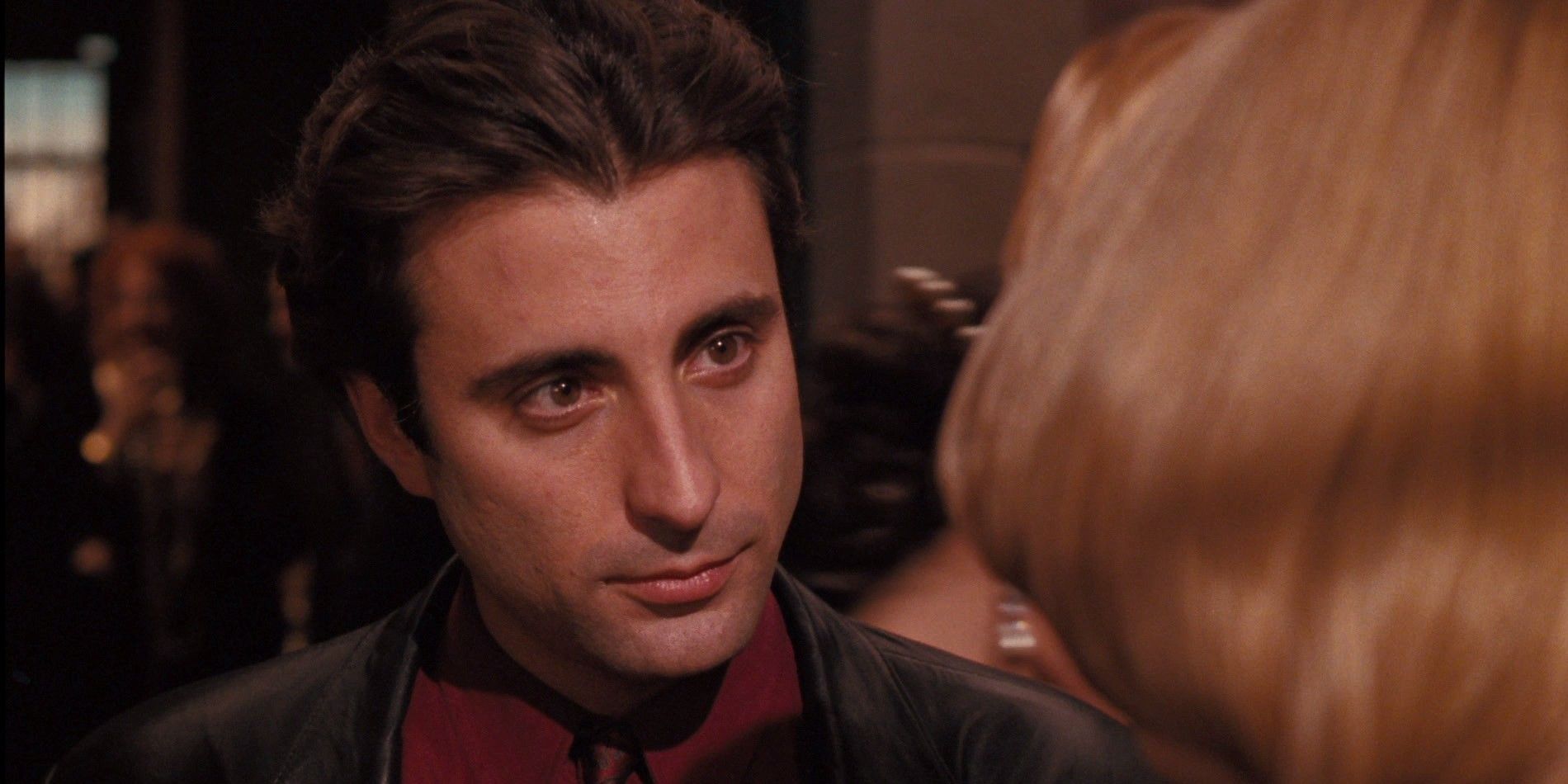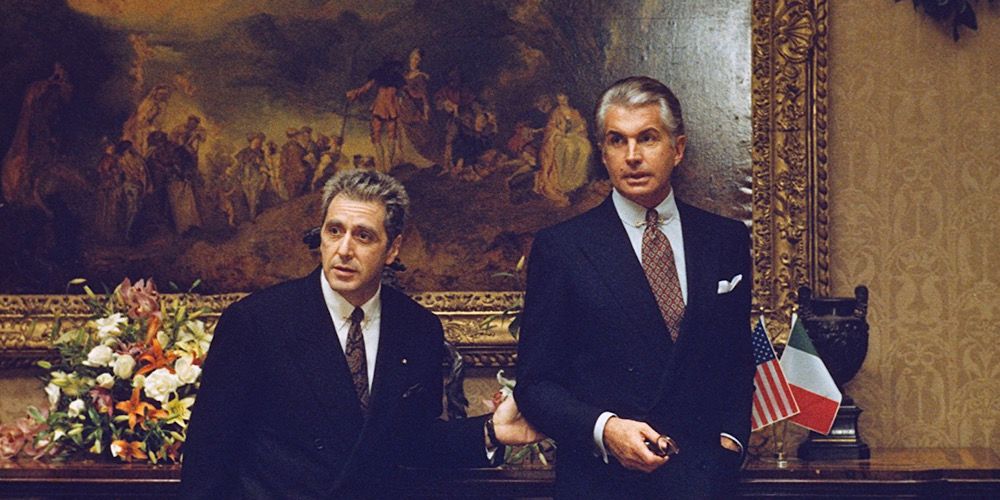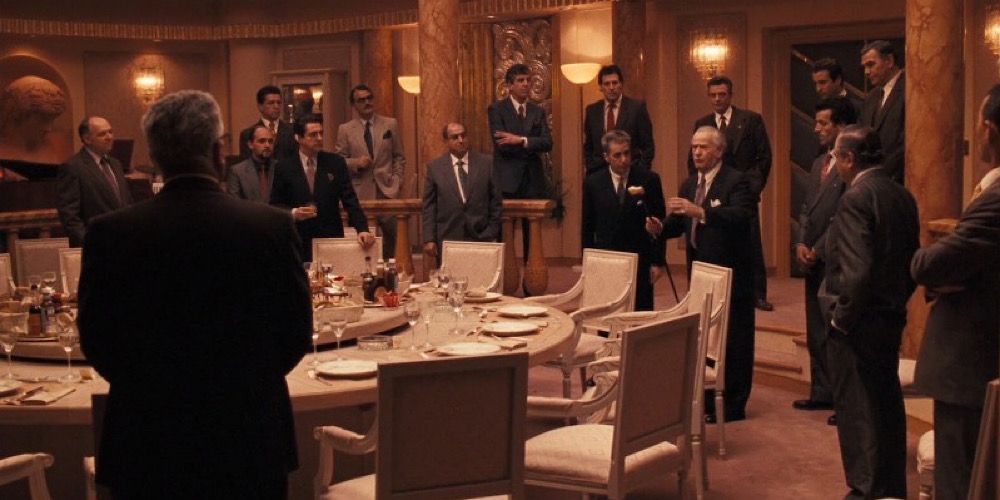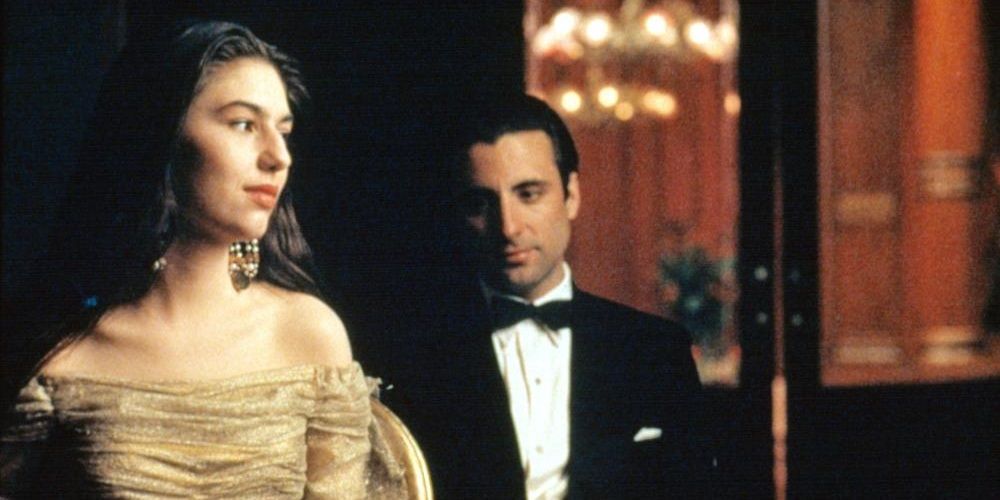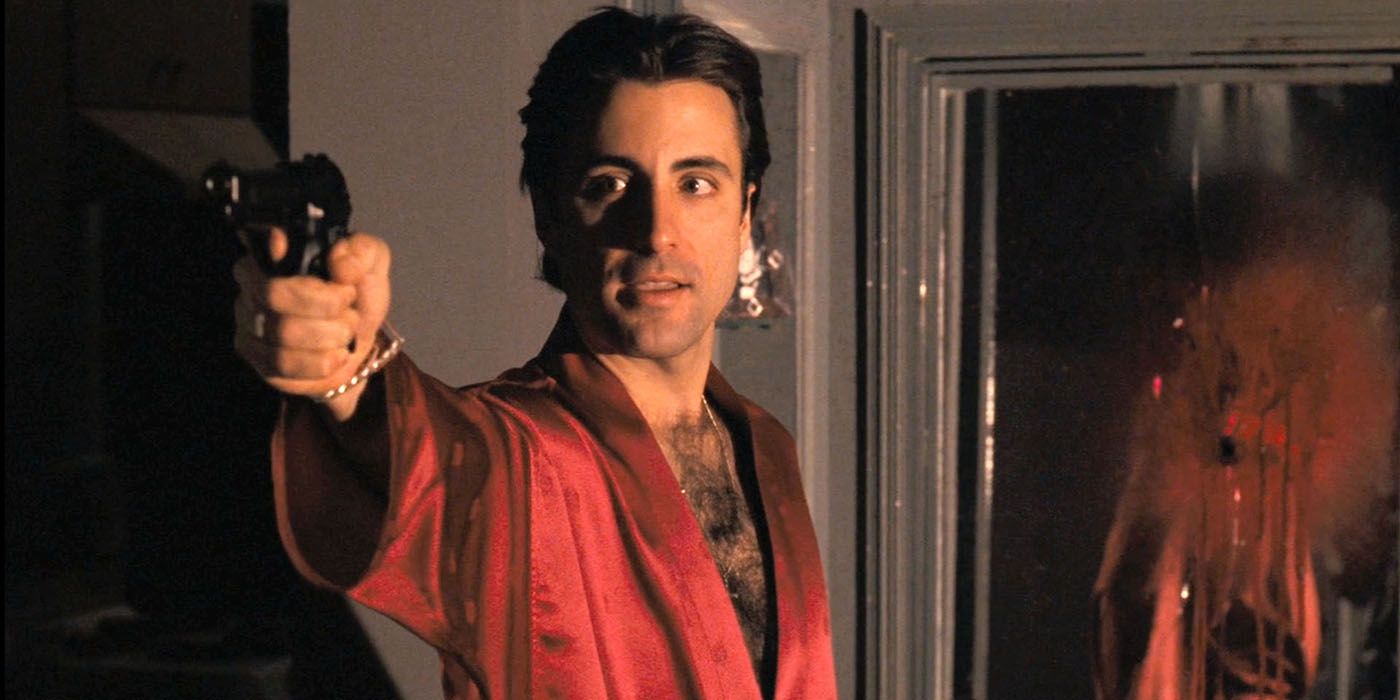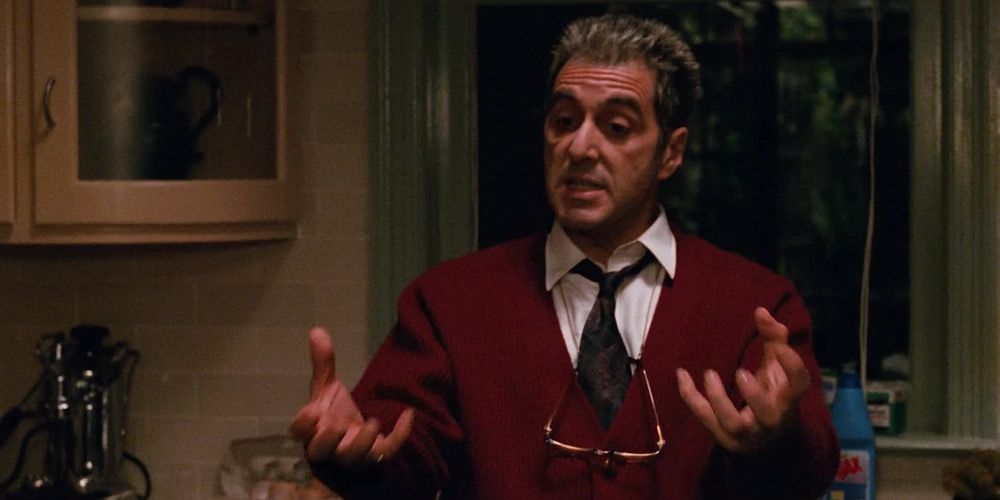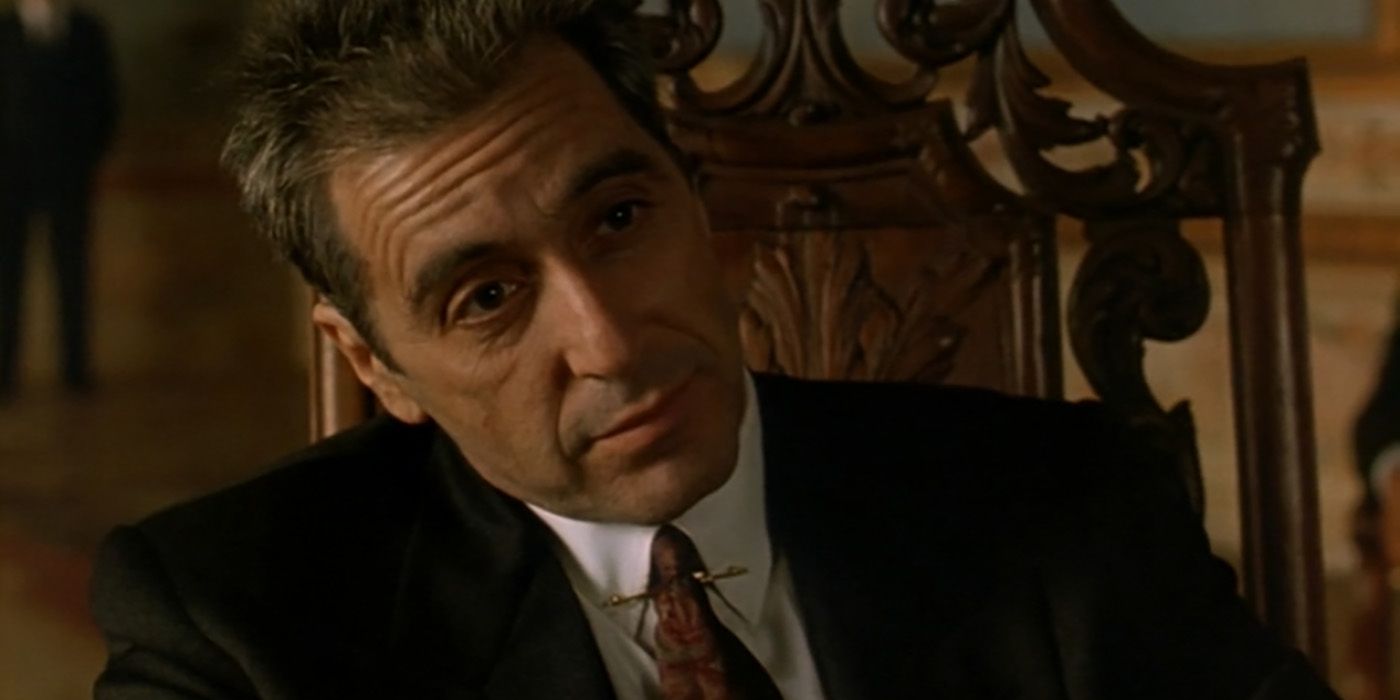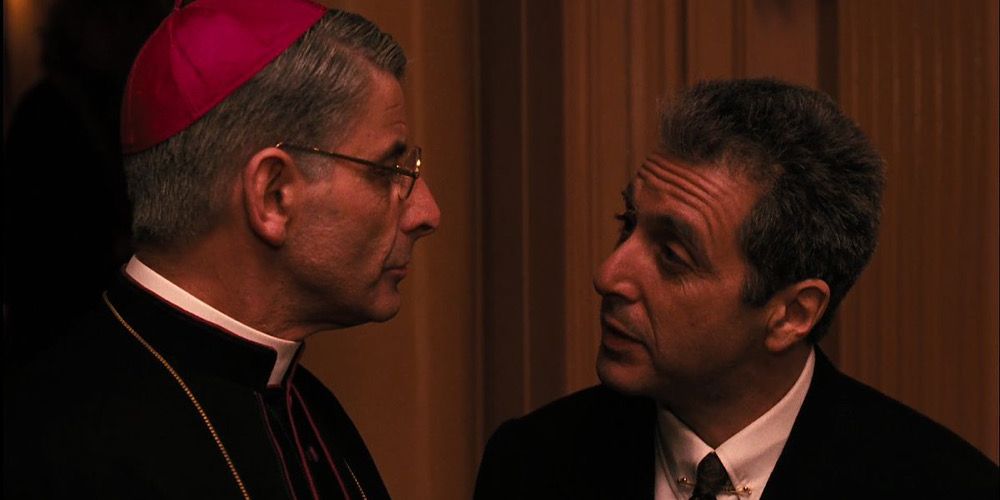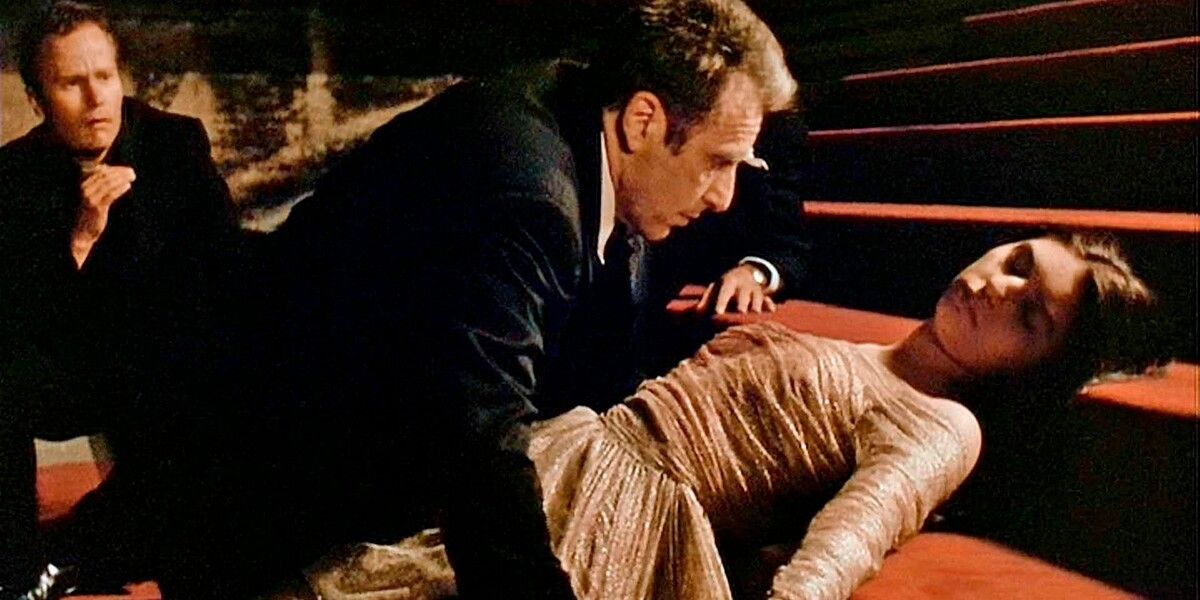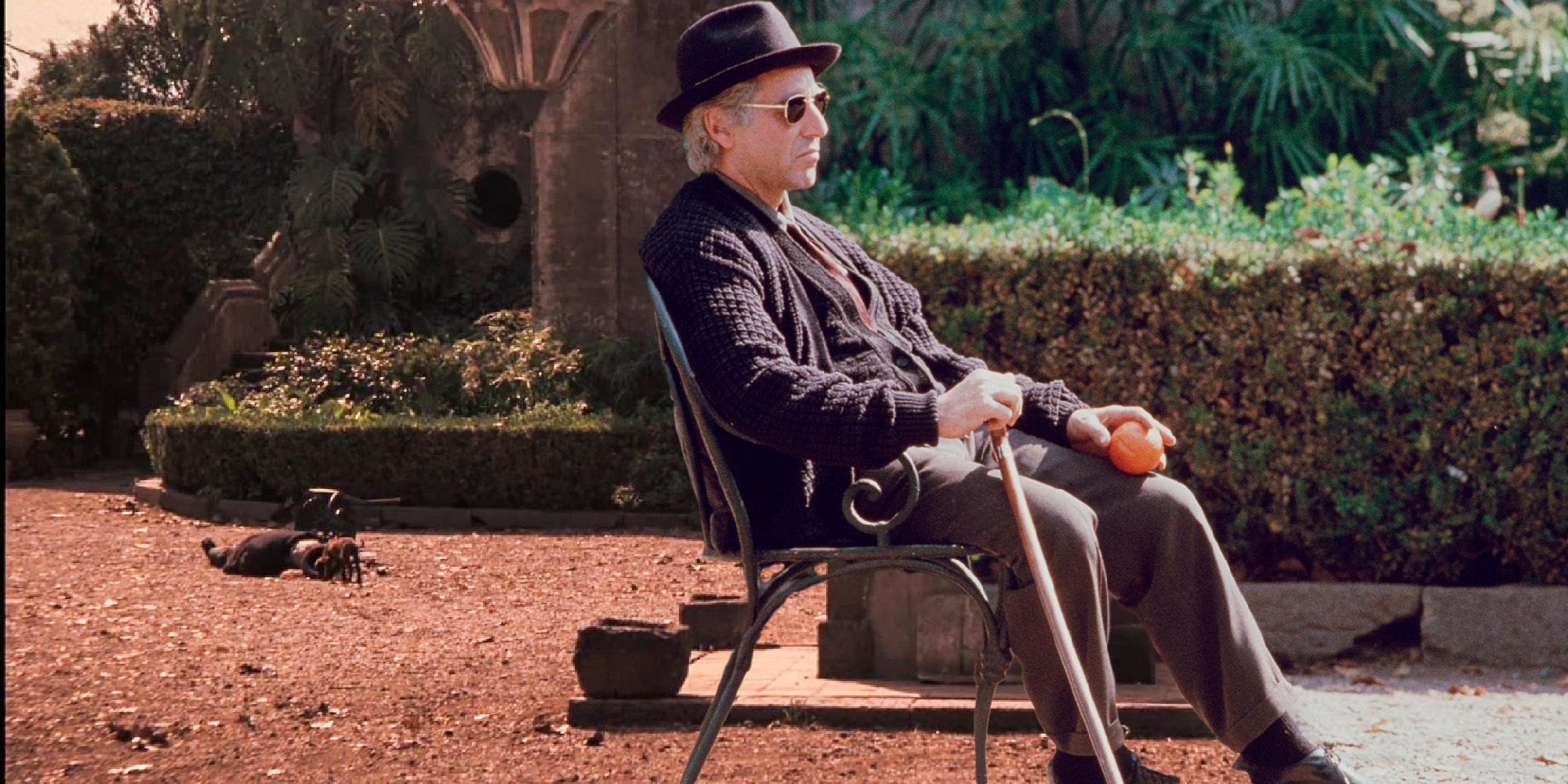The Godfather Part III was released in 1990 to universal acclaim. The movie was nominated for best picture at the Oscars as well as 10 other Academy Awards. But The Godfather Part III didn't actually win any of the Oscars for which it was nominated, and it wasn’t long until fans and critics started talking about major problems with the movie.
Due to story elements like the incestuous relationship between Mary and Vincent, and the whole idea of Michael ever being redeemed for his crimes, fans aren’t often eager to rewatch the trilogy's third installment. However, the film has a lot to offer. Between retaining the incredible look of the first two movies, delivering livelier action scenes, and introducing some of the series' best characters, there’s a lot to love about the end of Michael Corleone's story.
Vincent Is A Great Character
A lot of beloved characters in the Godfather films unfortunately didn’t return for the third movie, but there was one new addition to the cast that made audiences forget about the absentees. Vincent (Andy Garcia) is Sonny’s long-lost son, and he enters the fold convincing Michael that he should be the Godfather’s right hand man. The character is a big reason why The Godfather Part III is underrated.
Like his father, Vincent has a short fuse and is known for his ferocious temper. At one point, he literally tries to bite an enemy’s ear off after a disagreement. Vincent brought a menacing energy to the franchise that was missing without Sonny.
B.J. Harrison Is A Decent Replacement For Tom Hagen
Some people believe that Godfather Part III is better than Part II, but most will say that can’t be possible because Part III is missing one major player: Tom Hagen (Robert Duvall.) The character had been the family’s trusted lawyer and consigliere in the first movie and in The Godfather Part II.
The reason why Duvall wasn’t in Part III is because he and Coppola couldn’t agree on Duvall’s salary. Instead, B.J. Harrison (George Hamilton) is the new legal and financial advisor to Michael Corleone. He fills Hagen's shoes without coming off as derivative, and is actually one of the best characters in the series. The character even possessed a strong and more confident manner than Tom, which was refreshing to see in a consigliere.
The Helicopter Massacre In Atlantic City
When it comes to murders in the Godfather series, they tend to be fairly by-the-numbers for gangster business, whether it’s strangling somebody with piano wire or shooting somebody in the passenger seat from the backseat of a car. But Part III went above and beyond the expected when Michael travelled to Atlantic City to speak with other mob bosses he has a partnerships with.
At the meeting, Joey Zasa rains down on the bosses with machine-gun fire from a helicopter. It’s among the most uniquely violent scenes in the series. There’s even a strange streak of dark humor that runs through the scene as one gangster hangs onto a jacket hung on a coatrack because it’s his “lucky coat.” Unsurprisingly, the stubborn crime boss is quickly killed.
The Cinematography Is Stunning
It isn’t hard to forget that Francis Ford Coppola director Part III because, regardless of how criticized it is, the film always looks beautiful. The artistry in its cinematography is just as great as its predecessors.
Thankfully, Coppola brought back cinematographer Gordon Willis, who shot the first two movies, to shoot Part III. Even if viewers don’t enjoy the film's narratives, such as the love story between Mary and Vincent, they’ll at least enjoy the way the movie looks. The final act, which takes place in an opera house, it’s perhaps the best-looking sequence in the entire franchise.
The Home Invasion Scene
It’s the scene that shows viewers just how much like his father Vincent really is. In it, Vincent skillfully takes down two armed men while wearing nothing more than a dressing gown. No other scene in the Godfather movies had ever been this intense, thrilling and full of action all at the same time. There's a clear influence from the 1980s gangster action movies that had come between The Godfather Part II and Part III.
The home invasion sequence features some of the most theatrical violence in the series, even more so than the hotel massacre in Atlanta. However, this violence isn't gratuitous. It serves the story by showing what the future holds for the family with Vincent taking charge of the Corleone name and business.
It Features Some Of The Best Quotes Of The Series
Both of the first two Godfather movies feature classic quotes. Whether it’s Clemenza’s line in the original movie — “Leave the gun. Take the cannoli.” — or Part II popularizing the ancient proverb “Keep your friends close and your enemies closer,” the series is a well of iconic dialogue. Part III is no different. It features some lines that are just as good if not better than the first two movies.
After getting attacked in Atlanta when he denounces the illegitimate business affairs of the family, Michael sighs, “Just when I thought I was out, they pull me back in.” The line has become as embedded in pop culture as any quotes from the first two Godfather films. And perhaps the most underrated quote of them all comes when Archbishop Gilday tells Michael while in the Vatican, “The power to absolve debt is greater than the power of forgiveness."
A Natural Progression For Michael
The Godfather series is fundamentally about the hero becoming the villain, and when that reached its apex at the end of The Godfather Part II, there was only one direction in which Part III could have gone.
One of the biggest criticisms of Part III is that Michael tries to redeem himself after all the bad things he did to become the villain, and he ultimately succeeds. This character arc is familiar. It's the same one that so many critically acclaimed crime movies and shows have followed, whether it’s Walter White in Breaking Bad or Loki in the Thor series.
The Villain Isn’t Just A Rival Family
Though Joey Zasa is a major villain of the movie, as he was a corrupt member of the Corleone family who conspired against Michael, the Godfather had an even bigger rivalry in Part III. The Vatican itself is the biggest enemy the Corleone family ever encountered.
The way in which Michael tries to redeem himself is brilliant, attempting to bail out the Catholic Church in return for a majority share in Immobiliare. This would completely legitimise the family business. But, as Michael finds out, dealing with Archbishop Gilday is no better than dealing with a gangster like Virgil Sollozzo.
It Has Emotional Stakes
The Godfather Part III actually has real emotional stakes, and it features one of the most tragic deaths in the Godfather series when Michael's daughter, Mary, is murdered on the stairs of the opera house. There were stakes in both of the previous movies, but they never reached the emotional heights of Part III.
Even when Michael had Fredo, his own brother, murdered at the end of Part II, it didn’t have close to the same impact as when Michael screamed while holding Mary's lifeless body in his arms. Where there first two movies are expertly methodical, Part III is more emotional.
The Final Scene Is Perfect
The biggest problem that fans have with the final scene are the prosthetics on Al Pacino to make him look old as the film flash-forwards to him living in Sicily alone. But despite the practical effects, it’s the most fitting end for the character.
Though he was redeemed in the movie, Michael dies having lost everybody in his family. In the end, everyone in his life has either died or stopped talking to him. There’s no other way the movie could have ended, and it was almost flawless, even if having the character holding an orange as he died was a little on the nose.

